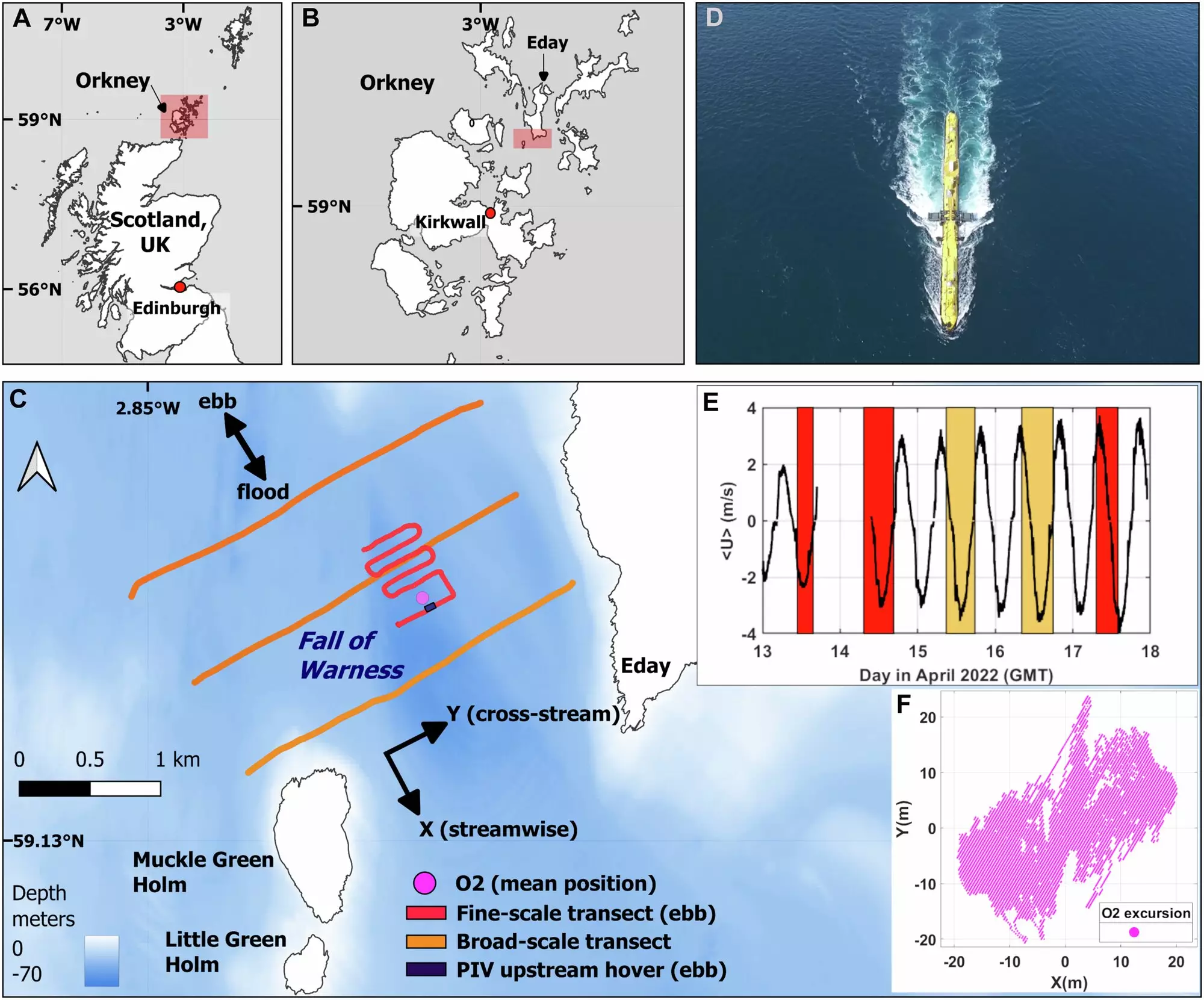The landscape of renewable energy is evolving rapidly, especially in regions like the UK, where significant advancements in tidal power are anticipated over the next few decades. Tidal energy, in particular, represents a reliable and predictable source of renewable electricity compared to other sources like wind and solar. However, the transition from theory to practice is fraught with challenges, especially in deploying cutting-edge technologies in the tumultuous marine environment. Recent studies, employing innovative methodologies such as aerial drones and boat surveys, aim to tackle these complexities head-on, improving our understanding of how tidal power installations interact with their surroundings.
The O2 Turbine: A Breakthrough in Tidal Technology
At the forefront of the tidal energy revolution is Orbital Marine Power’s O2 turbine, the most powerful of its kind installed in the Orkney Islands, Scotland. Unlike traditional tidal turbines that are fixed to the seabed, the O2 floats at the ocean’s surface, tethered by mooring lines. Spanning over 70 meters in length and able to generate enough energy to power approximately 2,000 homes annually, the O2 provides a glimpse into the future of renewable energy infrastructure. However, monitoring its performance sheds light on both the opportunities and hurdles presented by tidal energy systems.
A comprehensive study detailing the dynamics of the tidal flows impacting the O2 has revealed critical insights. The researchers mapped intricate tidal patterns, discovering that currents exceeding 8 knots could significantly influence the turbine’s operational efficiency. This information is vital as it not only informs the optimal positioning of individual turbines but also underscores the need for careful planning in turbine arrays to avoid ecological disruption downstream.
One of the study’s notable findings was the impact of the O2’s wake—the turbulent flow of water created behind the moving turbine—on marine populations and habitats. While the wake may inadvertently serve as a foraging hotspot for seabirds, overcrowding of turbine installations could hinder the movement of various marine species. This dual edge underscores the necessity of understanding twinning dynamics in renewable energy settings, raising awareness about the sensitivity of local ecosystems to anthropogenic influences.
Researchers emphasized that conducting in-depth, site-specific environmental assessments is critical. These assessments help to bridge the gap between theoretical models and real-world behavior, providing solid groundwork to guide decision-makers in defining suitable locations for future tidal turbine installations. In a world where advancements in technology should naturally align with ecological preservation, integrating substantial scientific knowledge into planning stages becomes non-negotiable.
This study was conducted by a collaborative team involving the Marine Biological Association, the University of Plymouth, and the University of the Highlands and Islands. The merging of diverse scientific expertise and innovative technological advances—like drone-based surveys—has yielded rich data essential for navigating tidal energy development challenges. As Shaun Fraser, Senior Scientist, aptly noted, combining science and technology can catalyze substantial progress in understanding dynamic tidal environments.
With the UK’s coastline poised for increased renewable energy installations, the need for adaptive strategies is more pressing than ever. The collaborative research efforts underscore the relevance of the interdisciplinary approach, paving the way for solutions that account for both energy production and ecological welfare.
Despite the promising trajectory of tidal energy, the sector must confront several obstacles. Cost implications associated with scaling technology, grid connectivity issues, and the challenges posed by extreme marine conditions remain significant hurdles. This research contributes to addressing these ongoing complexities by refining field measurement techniques critical to the sustainable growth of tidal energy technology.
As Professor Alex Nimmo Smith articulated, the experimental conditions cannot fully replicate the unpredictable natural forces present in ocean environments. Thus, integrating real-world assessments into future projects will be crucial for maximizing benefits in the clean energy transition.
The dawn of tidal energy as a mainstream source of electricity generation in the UK is on the horizon. The innovations and studies emerging from this realm not only acknowledge the practical trials of deploying sustainable technologies but also stress the importance of environmental consciousness. As we stand poised for a significant shift toward renewable energy, ensuring that progress does not come at an ecological cost will define the legacy of the tidal energy movement, crafting a future where humanity and nature can coexist harmoniously while harnessing the inherent power of the tides.


Leave a Reply